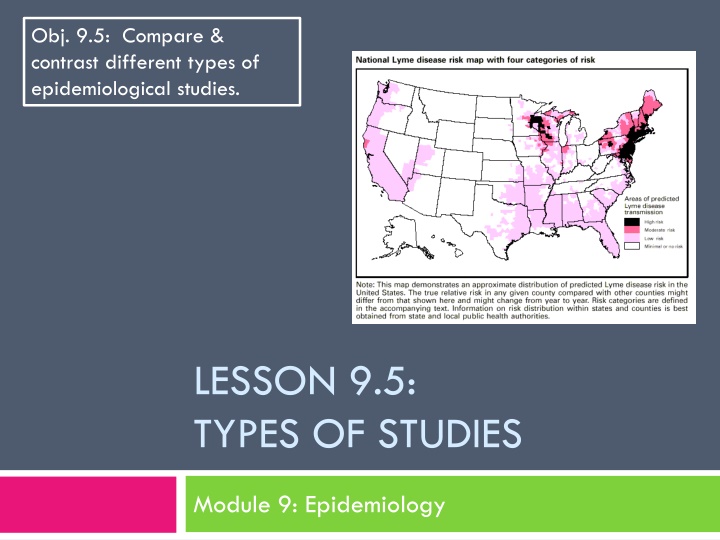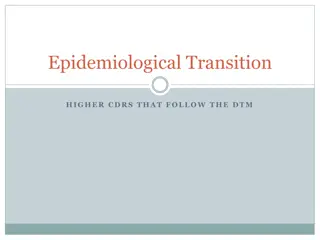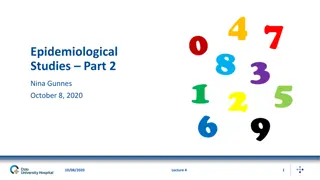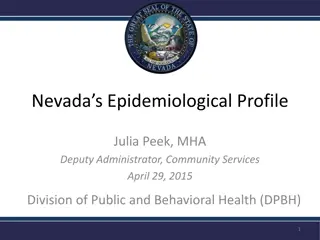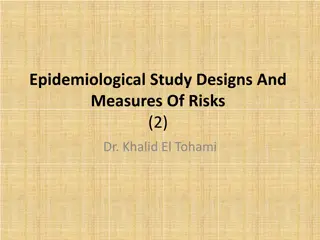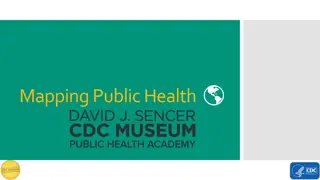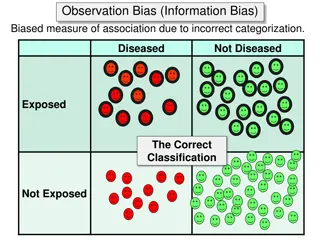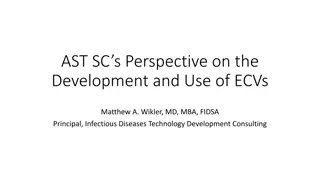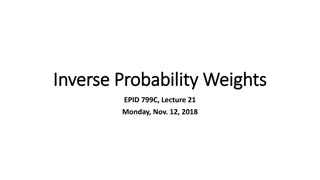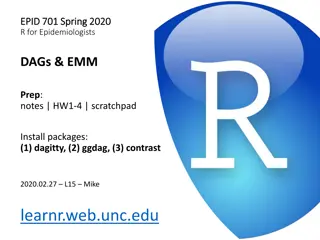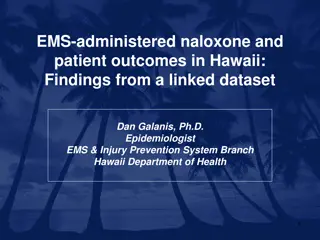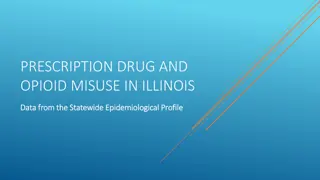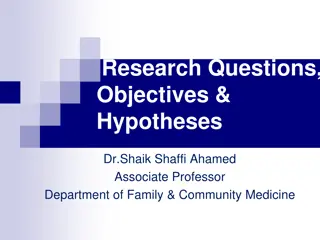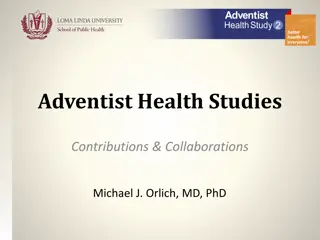Epidemiological Studies and Their Importance in Public Health
Epidemiological studies are crucial in understanding the distribution and determinants of health events in populations. They encompass various types, such as descriptive and analytical epidemiology, focusing on factors contributing to diseases. Epidemiologists use statistical methods to study health problems and develop interventions for disease prevention and control.
Download Presentation

Please find below an Image/Link to download the presentation.
The content on the website is provided AS IS for your information and personal use only. It may not be sold, licensed, or shared on other websites without obtaining consent from the author.If you encounter any issues during the download, it is possible that the publisher has removed the file from their server.
You are allowed to download the files provided on this website for personal or commercial use, subject to the condition that they are used lawfully. All files are the property of their respective owners.
The content on the website is provided AS IS for your information and personal use only. It may not be sold, licensed, or shared on other websites without obtaining consent from the author.
E N D
Presentation Transcript
Obj. 9.5: Compare & contrast different types of epidemiological studies. LESSON 9.5: TYPES OF STUDIES Module 9: Epidemiology
Do Now In March 1985, a nurse epidemiologist in a county health department noted, while reviewing surveillance data, three cases in a single month of hepatitis B of unusual origin. Hepatitis B, or serum hepatitis, is transmitted through sexual contact and by exposure to infected bodily fluids, but these three patients did not seem to have the usual risk factors. All three people did, however, indicate having received injections at the same health care facility. The nurse's immediate questions were: Is this a coincidence? Did these three cases occur by chance or is there a link? In this instance, the nurse decided to pursue an investigation. What might the nurse do next? Source: CDC EXCITE Epidemiology Lesson (http://www.cdc.gov/excite/classroom/intro_epi.htm)
Discuss Predict: What kind of methods do you think epidemiologists might use for studying a health problem?
Epidemiological Terms: Study Epidemiology is the basic science of public health. It's a highly quantitative discipline based on principles of statistics and research methodologies. Distribution Epidemiologists study the distribution of frequencies and patterns of health events within groups in a population. To do this, they use descriptive epidemiology, which characterizes health events in terms of time, place, and person. Determinants Epidemiologists also attempt to search for causes or factors that are associated with increased risk or probability of disease. This type of epidemiology, where we move from questions of "who," "what," "where," and "when" and start trying to answer "how" and "why," is referred to as analytical epidemiology. Source: CDC EXCITE Epidemiology Lesson (http://www.cdc.gov/excite/classroom/intro_epi.htm)
Epidemiological Terms: Health-related states Although infectious diseases were clearly the focus of much of the early epidemiological work, this is no longer true. Epidemiology as it is practiced today is applied to the whole spectrum of health-related events, which includes chronic disease, environmental problems, behavioral problems, and injuries in addition to infectious disease. Populations One of the most important distinguishing characteristics of epidemiology is that it deals with groups of people rather than with individual patients. Control Finally, although epidemiology can be used simply as an analytical tool for studying diseases and their determinants, it serves a more active role. Epidemiological data steers public health decision making and aids in developing and evaluating interventions to control and prevent health problems. This is the primary function of applied, or field, epidemiology. Source: CDC EXCITE Epidemiology Lesson (http://www.cdc.gov/excite/classroom/intro_epi.htm)
Epidemiological Terms: In the descriptive process, we are concerned with "person" (Who was affected?), "place" (Where were they affected?), and time (When were they affected?). Once we know the answers to these questions, we can enter the realm of analytical epidemiology and ask how and why these people were affected. Source: CDC EXCITE Epidemiology Lesson (http://www.cdc.gov/excite/classroom/intro_epi.htm)
1) Deaths associated with tractor injuries, by month of death, Georgia 1971-1981 Source: CDC EXCITE Epidemiology Lesson (http://www.cdc.gov/excite/classroom/intro_epi.htm)
2) Deaths associated with tractor injuries, by time of day, Georgia 1971-1981 Source: CDC EXCITE Epidemiology Lesson (http://www.cdc.gov/excite/classroom/intro_epi.htm)
3) Deaths associated with tractor injuries, by place, Georgia 1971-1981 Source: CDC EXCITE Epidemiology Lesson (http://www.cdc.gov/excite/classroom/intro_epi.htm)
4) Deaths associated with tractor injuries, by age group, Georgia 1971-1981 Source: CDC EXCITE Epidemiology Lesson (http://www.cdc.gov/excite/classroom/intro_epi.htm)
Analytical Studies: Cross-sectional, Cohort, and Case-control The first type of design, a cross-sectional study, is basically the same as a survey. In this type of study, the epidemiologist defines the population to be studied and then collects information from members of the group about their disease and exposure status. Since the data represent a point in time, it's like taking a "snapshot" of the population. Cross-sectional studies are good for examining the relationship between a variable and a disease, but not for determining cause and effect, which requires data over time. Cohort studies and case-control studies are much better suited to examining cause-and-effect relationships. Source: CDC EXCITE Epidemiology Lesson (http://www.cdc.gov/excite/classroom/intro_epi.htm)
Analytical Studies: Cross-sectional, Cohort, and Case-control Cohort studies have several advantages: You can examine multiple outcomes for a single exposure. For instance, if you select a group based on their smoking exposure, you can look not only at the incidence of lung cancer, but also at the incidence of cardiovascular disease, emphysema, burns, other smoking-related outcomes. Cohort studies are very useful in examining rare exposures, such as asbestos exposure and lung cancer. You can directly calculate the incidence of disease for each of the exposure groups. The temporal sequence is logical: you are starting with exposure and following forward in time to the development of disease. Source: CDC EXCITE Epidemiology Lesson (http://www.cdc.gov/excite/classroom/intro_epi.htm)
Analytical Studies: Cross-sectional, Cohort, and Case-control In a case-control study, the epidemiologist is working backward, from the effect to the suspected cause. For this reason, case-control studies are often referred to as retrospective studies. Participants are selected on the basis of the presence or absence of the disease or outcome in question, so that you have one group of people (case-subjects) with the health problem and one without (controls). These groups are then compared to determine the presence of specific exposures or risk factors. For example, you could pick a group of people with lung cancer and a group without and then compare them for their history of exposure to smoking. The relationship between exposure and outcome in a case-control study is quantified by calculating the odds ratio. Case-control studies have three primary advantages: You can examine multiple exposures for a single outcome. They are well suited for studying rare diseases and those with long latency periods. They require fewer case-subjects and are generally quicker and less expensive to conduct than cohort studies, which makes them well suited for the conditions of an outbreak investigation. Source: CDC EXCITE Epidemiology Lesson (http://www.cdc.gov/excite/classroom/intro_epi.htm)
Homework: Find a summary of a health-related research study (news article, abstract of a journal article, etc.) and determine what type of study it is (Cross-sectional, Cohort, or Case-control). Explain the study and provide evidence showing which type of study it is. Then explain WHY you believe the scientists chose that particular type of study method for their research. Challenge: Try to find one example of EACH type of study!
